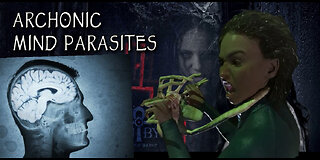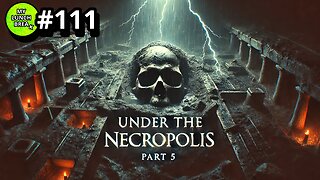Premium Only Content

The Father Factor: How the Absence of a Father Shapes Toxic Relationships
(A Comprehensive Exploration of Emotional Development, Behavioral Patterns, and Paths to Healing)
Introduction
“Behind almost every toxic relationship, there lies a silent story of absence—the absence of a father.”
Fatherhood often goes unexamined in discussions about personal development. Yet its influence can profoundly shape emotional well-being, relational dynamics, and core identity. When a father figure is absent—whether through death, estrangement, or neglect—children grow up without a crucial anchor for security and growth. This article unpacks how such absence impacts both men and women in forging or falling into toxic relationships, offering insights into the root causes and exploring ways to heal and break negative cycles.
I. The Role of the Father in Emotional Development
1. Fathers as the First Model of Masculinity
• Concepts of Strength and Protection
From a young age, children often look to their fathers for cues on how masculinity behaves: Are they warm or detached? Fair or authoritarian? This primary masculine template shapes a child’s outlook on male authority and boundaries.
• Authority and Boundaries
Fathers who model balanced self-control and empathetic leadership convey that strength can coexist with empathy. Without that example, children may never see a blueprint of healthy boundary-setting, skewing their perceptions of what “masculinity” means.
2. The Emotional Anchor
• Security and Confidence
A supportive father often instills a sense of safety, encouraging children to explore life’s uncertainties without fearing abandonment. His presence can help develop emotional resilience, fostering confidence in navigating life’s challenges.
• Consequences of Absence
Where no father figure exists, or if he’s emotionally unavailable, children may feel a subtle insecurity about male support. Over time, this can lead to maladaptive relationship behaviors, particularly when searching for that elusive sense of stability.
II. Patterns in Women with Absent Fathers
1. Two Extremes: Aggression or Over-Accommodation
• Aggression
Some women channel unresolved anger toward men in general, manifesting as cheating, emotional detachment, or hyper-control in relationships. The root is often distrust: “If my own father wasn’t there, why trust any man?”
• Over-Accommodation
Another common pattern is excessive appeasement. Driven by a fear of losing any male presence, these women accept toxic behaviors, cling to abusive partners, or remain in relationships out of dread of being alone.
2. Father Hunger and Attachment Issues
• Longing for Masculine Validation
“Father hunger” describes the deep craving for paternal love and acceptance, which can lead to jumping from one unhealthy relationship to another, seeking what was never received at home.
• Unclear Boundaries
Without a positive paternal example, identifying healthy masculinity becomes tough. Toxic traits (such as aggression or manipulation) might be confused for passion or strength—fueling repeated cycles of poor choices.
III. Patterns in Men with Absent Fathers
1. The Three Archetypes of Fatherless Men
1. The Pleaser
• Tends to be overly accommodating, rarely asserting boundaries out of fear of replicating paternal abandonment. He often avoids conflict, leading to enabling or codependent relationships.
2. The Aggressor
• Responds to paternal absence with anger and intimidation—lashing out in relationships, mirroring internalized maternal resentments or conflating aggression with the “masculine edge” he never saw modeled.
3. The Drifter
• Feels directionless, uncertain how to structure relationships or personal goals. Without paternal mentorship, self-confidence erodes, and they struggle to define their role.
2. The Mother Complex
• Strained Maternal Dynamics
A father’s absence can strain the son’s rapport with the mother, creating emotional volatility or resentment. Some men express hidden hostility toward women in general, projecting maternal conflicts into romantic scenarios.
• Passive-Aggressive or Misogynistic Leanings
When paternal guidance is missing, the mother’s perceived shortcomings, along with an internal void, can foster dysfunctional attitudes—subtly or overtly—toward women.
IV. The Psychological Mechanics of Father Absence
1. Attachment Theory and Father Absence
• Anxious, Avoidant, or Disorganized
Absent fathers can undermine secure attachment. An anxious child might cling desperately to partners, an avoidant one might keep emotional distance, and a disorganized style might wreak havoc on every relationship.
• Long-Term Relationship Impact
Decades later, these attachments manifest in adult romances—fear of intimacy, jealousy, emotional withdrawal, or chaotic push-pull patterns.
2. Masculinity and Identity
• A Void Where a Role Model Should Be
Learning to “be a man” often includes gleaning emotional and ethical lessons from a father figure. Without it, men may rely on skewed media stereotypes or friend groups to define masculinity.
• Societal Pressures
Cultural norms urging men to embody strength can exacerbate confusion for fatherless men, pushing them toward overcompensation (e.g., aggression) or withdrawal.
3. Emotional Dysregulation
• Lack of Coping Skills
Consistent paternal involvement can teach conflict resolution. Absent fathers leave children fending for themselves emotionally.
• Insecure Behaviors
Many father-absent adults develop reactivity, insecurity, or crises of self-worth that bleed into toxic relationship dynamics.
V. Generational Cycles and Broader Societal Impacts
1. The Generational Cycle of Fatherlessness
• Broken Relationships Perpetuate
Sons without father figures can become absent fathers themselves, repeating patterns. The same with daughters who keep selecting untrustworthy partners, embedding fatherless cycles.
• Intergenerational Trauma
This cycle can manifest in chronic emotional neglect, setting children up for the same relational challenges, perpetuating fatherlessness.
2. Societal Norms and Their Role
• Single-Parent Realities
While single mothers heroically try to fill both parental roles, lacking paternal presence can still take an unseen toll.
• Neglecting Fathers in Conversation
Public discourse often underestimates paternal influence—unintentionally reinforcing the idea that dads are optional. This oversight has deep ramifications for emotional well-being.
VI. Breaking the Cycle: Healing and Growth
1. For Women
• Addressing Aggression
• Recognize hostility as a defense mechanism. Therapy can reframe trust in men.
• Learning to differentiate protective instincts from disruptive anger fosters healthier boundaries.
• Overcoming Over-Accommodation
• Develop self-reliance, self-esteem, and the courage to walk away from toxic situations.
• Understand that loneliness is not the worst outcome—chronic neglect or abuse is worse.
2. For Men
• Rebuilding a Sense of Masculinity
• Seek mentorship—through supportive relatives, coaches, spiritual guides, or therapy.
• Embrace assertiveness and emotional honesty, replacing aggression or passivity with balanced expressions.
• Confronting Maternal Anger
• Pinpoint hidden resentments from childhood.
• Reassess one’s views on relationships, ensuring female partners aren’t scapegoats for paternal absence.
3. The Role of Therapy and Mentorship
• Male Mentors
• Uncles, grandfathers, stepfathers, coaches—any stable male role model can help fill paternal gaps, guiding both men and women in forging healthy relational frameworks.
• Trauma-Focused Interventions
• Therapy that addresses father wounds can heal insecurities, limiting the perpetuation of father-absent patterns into adulthood and future generations.
VII. Practical Strategies for Navigating Relationships
1. Identifying Toxic Patterns
• Self-Assessment
• Reflect on how fatherless dynamics might inform your anger, clinginess, or fear of commitment.
• Red Flags
• Emotional avoidance, unspoken jealousy, controlling impulses—monitor these signs of reactivity linked to childhood longing or betrayal.
2. Building Emotional Intelligence
• Healthy Communication
• Conflict resolution based on active listening and empathy fosters resilience.
• Boundary-Setting
• Clear personal lines prevent either dominating or over-submissive behaviors, enabling mutual respect.
3. Partnering with Awareness
• Recognizing “Father Absence” Influences
• Learning to approach love interests with knowledge that father wounding can shape behaviors.
• Support, Not Enabling
• Partners can encourage therapy and personal growth, but each individual must take responsibility for their own healing journey.
VIII. Conclusion
Fathers matter—not just as breadwinners or authority figures, but as emotional linchpins and role models for healthy connection. When that paternal guidance is lacking, it often forges a void that haunts adulthood, undermining security in relationships and breeding toxic dynamics. Yet knowing this pattern empowers us: once we realize how father absence shapes our emotional fabric, we can begin unweaving the knots. By facing wounds, seeking mentorship, and nurturing empathy, both men and women can dismantle harmful cycles, transforming old scars into seeds of wisdom for the future.
Reflection: The absence of a father leaves an imprint on how we love, argue, and protect ourselves—yet it needn’t doom us to broken relationships. Understanding these patterns and addressing them with compassion can reshape legacies of hurt into living tales of resilience.
Call to Action: Whether you’re grappling with your own father’s absence or noticing these patterns in someone you care about, reflect deeply and seek paths to healing—through therapy, mentorship, or community support. In doing so, you break destructive cycles and forge a healthier roadmap for tomorrow’s generation.
-
 2:37
2:37
FragmentsOfTruth
11 hours agoThe Alien Matrix: Are Extraterrestrial Parasites Controlling Your Mind & Body?
64 -
 LIVE
LIVE
tacetmort3m
19 hours ago🔴 LIVE - SOLO RANK GRINDING CONTINUES - MARVEL RIVALS
1,206 watching -
![Shadows Of Chroma Tower, Alpha Playtest [Part 1]](https://1a-1791.com/video/fwe2/1d/s8/1/5/Q/U/n/5QUnx.0kob-small-Shadows-Of-Chroma-Tower-Alp.jpg) LIVE
LIVE
iViperKing
9 hours agoShadows Of Chroma Tower, Alpha Playtest [Part 1]
1,467 watching -
 54:05
54:05
TheGetCanceledPodcast
6 hours ago $6.23 earnedThe GCP Ep.11 | Smack White Talks Smack DVD Vs WorldStar, Battle Rap, Universal Hood Pass & More...
68K18 -
 13:37
13:37
Exploring With Nug
10 hours ago $0.99 earnedSUV Found Underwater Searching For Missing Man Jerry Wilkins!
50.9K1 -
 2:58:21
2:58:21
xBuRnTx
5 hours ago1st Warzone Stream Online
29.2K2 -
 6:10:21
6:10:21
JdaDelete
1 day ago $0.48 earnedDino Crisis - Sega Saturday
52.2K3 -
 23:22
23:22
MYLUNCHBREAK CHANNEL PAGE
1 day agoUnder The Necropolis - Pt 5
58.4K27 -
 2:26:11
2:26:11
Jewels Jones Live ®
2 days agoWINNING BIGLY | A Political Rendezvous - Ep. 108
117K42 -
 2:04:49
2:04:49
Bare Knuckle Fighting Championship
4 days agoBKFC FIGHT NIGHT MOHEGAN SUN FREE FIGHTS
51.7K7